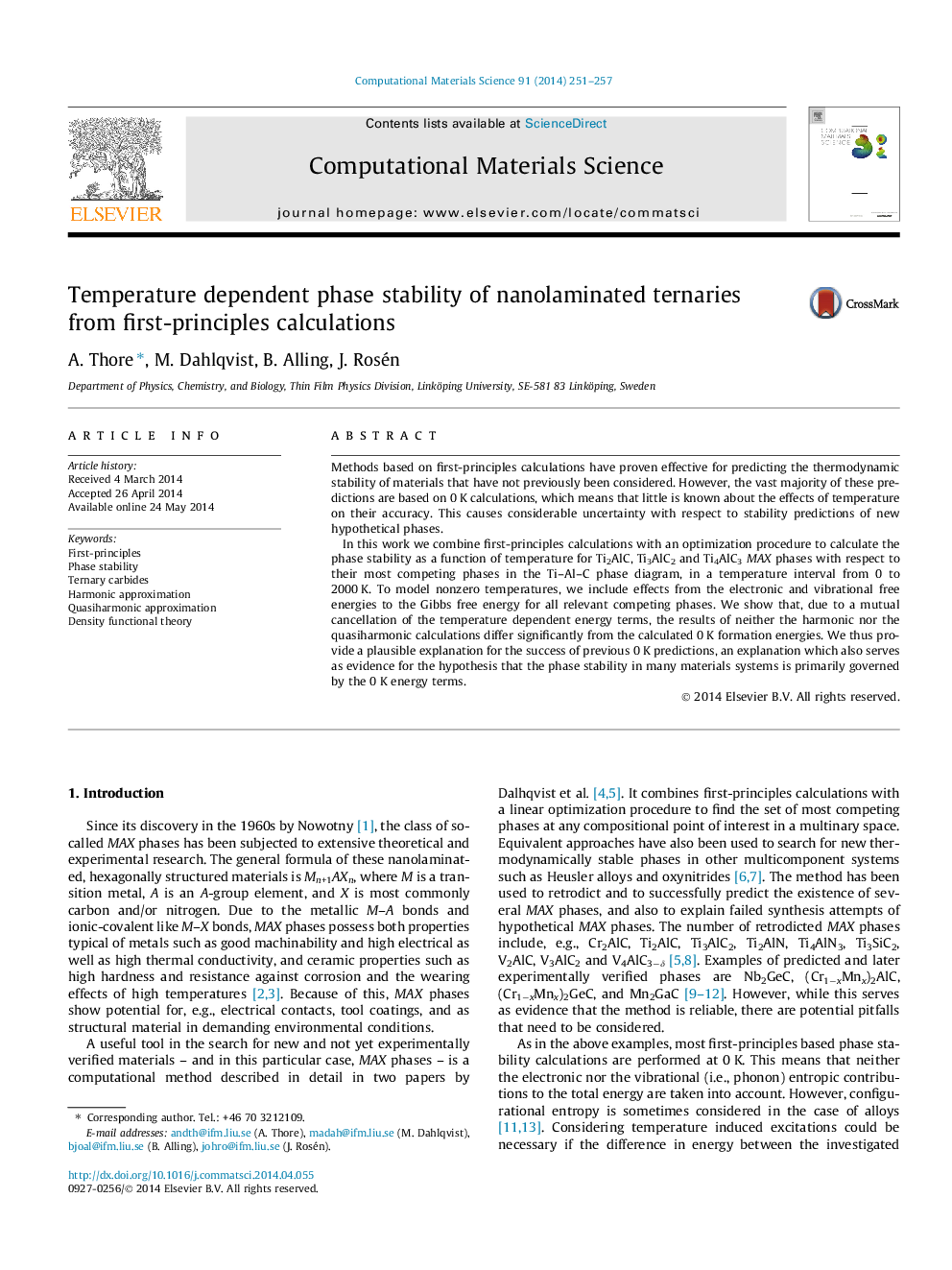| Article ID | Journal | Published Year | Pages | File Type |
|---|---|---|---|---|
| 1560733 | Computational Materials Science | 2014 | 7 Pages |
Abstract
In this work we combine first-principles calculations with an optimization procedure to calculate the phase stability as a function of temperature for Ti2AlC, Ti3AlC2 and Ti4AlC3MAX phases with respect to their most competing phases in the Ti-Al-C phase diagram, in a temperature interval from 0 to 2000Â K. To model nonzero temperatures, we include effects from the electronic and vibrational free energies to the Gibbs free energy for all relevant competing phases. We show that, due to a mutual cancellation of the temperature dependent energy terms, the results of neither the harmonic nor the quasiharmonic calculations differ significantly from the calculated 0Â K formation energies. We thus provide a plausible explanation for the success of previous 0Â K predictions, an explanation which also serves as evidence for the hypothesis that the phase stability in many materials systems is primarily governed by the 0Â K energy terms.
Keywords
Related Topics
Physical Sciences and Engineering
Engineering
Computational Mechanics
Authors
A. Thore, M. Dahlqvist, B. Alling, J. Rosén,
